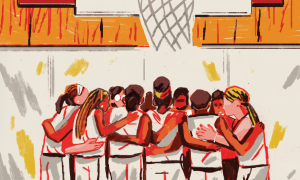article
4,340 Results
article
What We’re Watching
Dim the lights and get ready to learn with these TT-approved films!
article
Rebounding From Hate

When members of this middle school basketball team experienced bigotry and harassment, they had a choice: Give up or rise up.
article
Teaching in Solidarity

The guiding principles behind the Black Lives Matter At School Week of Action can be an important frame through which to reimagine more liberatory educational spaces for Black children.
article
From Mourning to Action

After this weekend’s shootings in El Paso and Dayton, we ask: How do educators keep tragedy and terror from overwhelming them as they fight for justice?
publication
Anti-Immigrant
Animus toward people perceived to be immigrants led to a significant amount of harassment in schools; about 18 percent of the incidents that educators reported were directed toward people seen as “foreign.” This category
May 1, 2019
article
What If My Student Discloses a Sexual Assault?

This guidance from experts at the National Association of School Psychologists can help educators respond if a student discloses abuse or assault.
article
New Arizona Laws Move Latinos to Action
Earlier this year, Arizona Gov. Jan Brewer signed HB 2281 into law, making it an offense to teach courses at any grade level that promote resentment towards a race or class of people. The law further states that no classes may be designed for any ethnic group or promote ethnic solidarity. This despite the fact that, according to the U.S. Census, 30 percent of the state is made up of Latinos.
text
Informational
The First Americans
The Grand Council Fire of American Indians wrote this letter in response to the Chicago mayor's 1927 campaign against the use of British textbooks in public schools. The letter condemns the misrepresentation of Native American history in schools.
July 3, 2014
article
Prevention and Resilience: Supporting Young People Through Polarizing Times

During this time of political and social turmoil, build networks of trusted adults to help young people understand, contextualize and counter manipulative and harmful information.